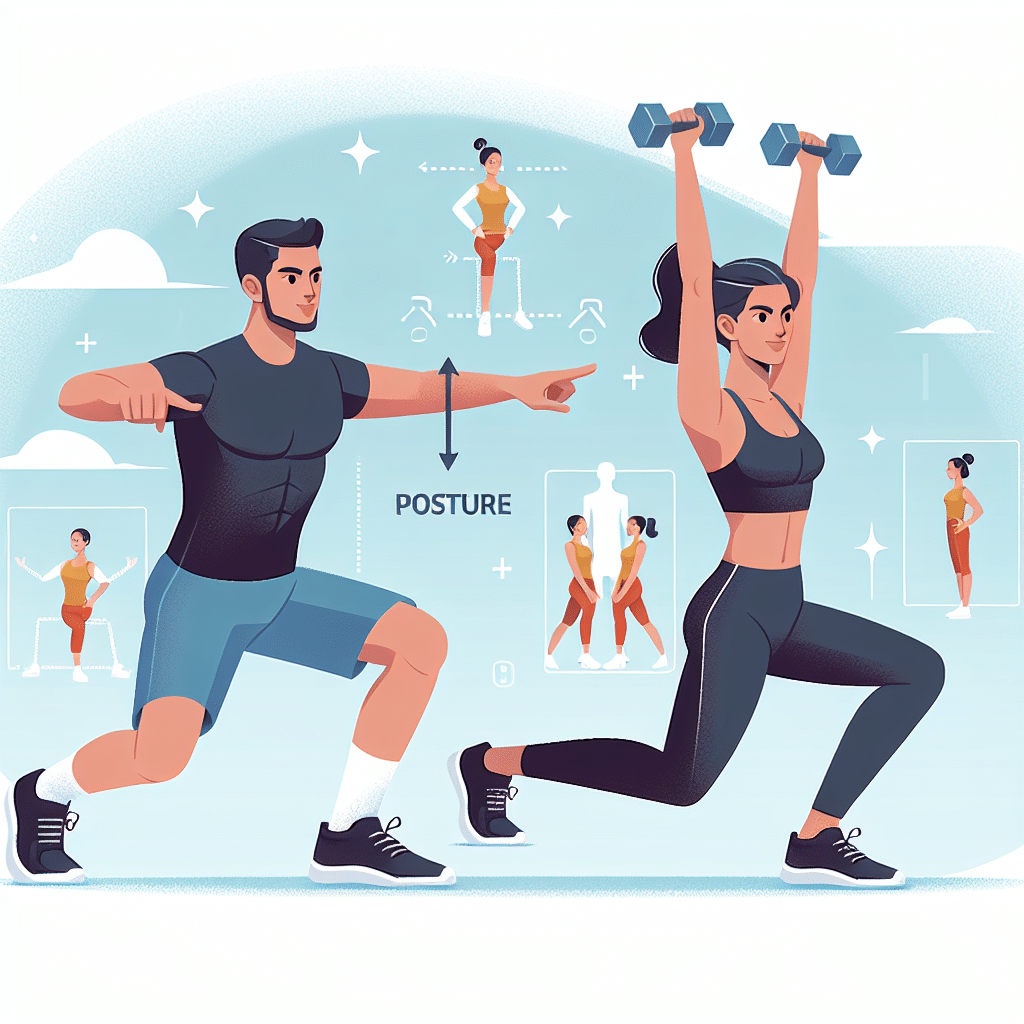Combining Posture Exercises with Fitness
Understanding Posture and Its Importance
Posture is not merely a matter of aesthetics; it plays a crucial role in overall health and fitness. Good posture enhances balance, stability, and strength, while a poor posture can lead to musculoskeletal problems, decreased circulation, and even hinder athletic performance. When combined with regular fitness routines, posture exercises can enhance muscle function, improve flexibility, and prevent injuries.
The Science Behind Posture
Research reveals that posture is deeply connected to core strength, flexibility, and muscular health. The core consists of various muscles, including the abdominals, back, and pelvic floor, which stabilize the body during movements. Ideal posture involves an alignment where the head is above the spine, the shoulders are relaxed, and the pelvis is neutral. Biomechanically, this alignment allows for optimal weight distribution, reducing strain on ligaments and muscles, thereby enhancing endurance and strength during physical activities.
Common Postural Issues
Many people suffer from postural problems, such as forward head posture, rounded shoulders, and excessive lumbar lordosis. Sedentary lifestyles, prolonged sitting, and inadequate ergonomic setups contribute to these issues. Individuals engaged in fitness may experience imbalances due to repetitive movements that overemphasize certain muscle groups. Therefore, incorporating targeted posture exercises can correct these imbalances, supporting better movement mechanics in daily and athletic activities.
Integrating Posture Exercises into Fitness Routines
- Warm-Up with Focused Posture Exercises
Before beginning any workout, it’s crucial to prepare the body. A dynamic warm-up including posture-specific exercises can increase blood flow and activate supporting muscle groups. Incorporate exercises such as wall angels and cat-cow stretches to enhance spinal mobility and shoulder flexibility.
- Strengthening Exercises
To improve posture, focus on both upper back and core strength. Here are some effective exercises:
- Rows: Using a resistance band or cable machine, perform rows to engage the upper back muscles, counteracting rounded shoulders.
- Plank Variations: Planks strengthen the entire core, promoting pelvic stability. Incorporate side planks to further engage the obliques.
- Bird-Dogs: This exercise improves core stability and enhances coordination by simultaneously extending the opposite arm and leg.
- Flexibility and Mobility Training
Flexibility is essential for maintaining an optimal posture. Include routine stretching for the chest, shoulders, and hip flexors:
- Chest Stretch: Stand against a wall or door frame, placing your forearm on the surface and turning away to stretch the pectoral muscles.
- Hip Flexor Stretch: Kneel on one knee with the opposite foot planted in front, pushing your hips forward to stretch the hip flexors.
- Mind-Body Connection
Yoga and Pilates offer significant benefits for posture improvement while enhancing overall fitness. Both practices emphasize alignment, flexibility, and core strength. Incorporate poses like the plank, downward dog, and bridge, which effectively reinforce proper posture mechanics through controlled movements.
- Cooldown and Recovery
Post-workout recovery is a perfect opportunity to focus on posture. Spend additional time stretching postural muscles that may have tightened during the workout. Foam rolling can also help release tension in muscles, increasing blood flow to promote recovery.
Daily Posture Practices
Integrate these posture practices throughout your day to ensure continual improvement. Sitting with a straight back, aligning your ears over your shoulders while working, and using ergonomic chairs can aid in maintaining good posture, even outside of workouts.
The Role of Technology
Wearable technology can enhance the accountability of your posture exercises. Fitness trackers that measure posture and movement encourage users to remain aware of their alignment throughout the day. Apps focused on exercise routines can provide structured guidance on integrating posture exercises into daily fitness plans.
Long-term Benefits of Strong Posture for Fitness
Adopting a posture-focused approach within fitness routines can lead to long-lasting benefits:
- Enhanced Performance: Improved posture translates to better biomechanics, enabling athletes and fitness enthusiasts to perform movements more efficiently and powerfully.
- Injury Prevention: Stronger supporting muscles reduce the likelihood of injuries, particularly for those engaging in high-impact activities.
- Increased Confidence: A well-aligned posture is associated with increased self-confidence and can positively influence mental health.
Creating a Personalized Posture-Enhanced Fitness Plan
To optimize your fitness routine with posture exercises, consider collaborating with a professional trainer or a physical therapist. They can design an individualized plan that addresses any postural imbalances, emphasizes corrective exercises, and aligns with your fitness goals.
Conclusion
Incorporating posture exercises with a fitness routine is about balancing strength, flexibility, and proper alignment. Through attentive practice, effective techniques, and mindful awareness, individuals can significantly improve posture, enhance fitness performance, and pave the way for long-lasting health benefits. Optimal posture is the foundation upon which a successful fitness journey is built, improving both physical capabilities and overall quality of life.
Regular assessment of posture through self-checks or consultations can allow for ongoing adjustments in your training regimen. With a commitment to integrating these elements, achieving peak performance and well-being becomes an attainable goal.
